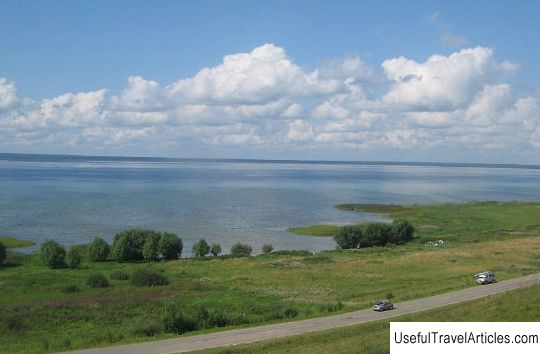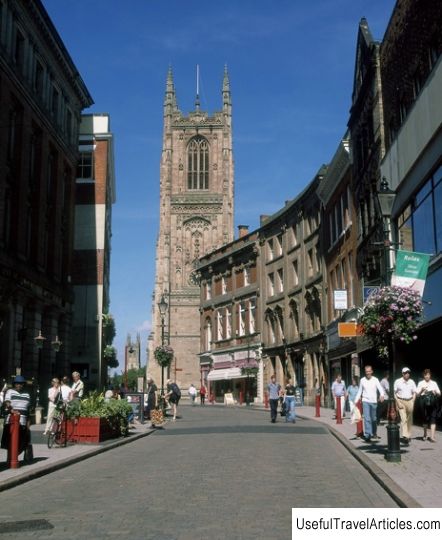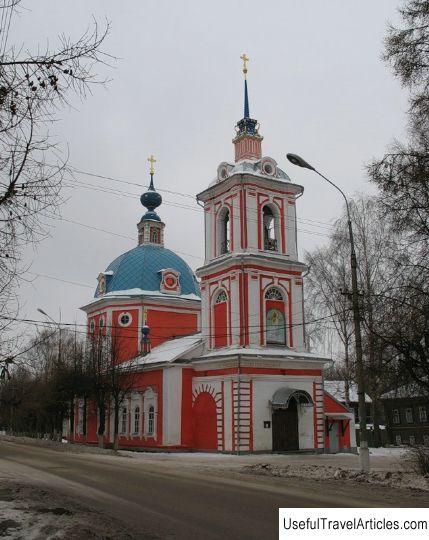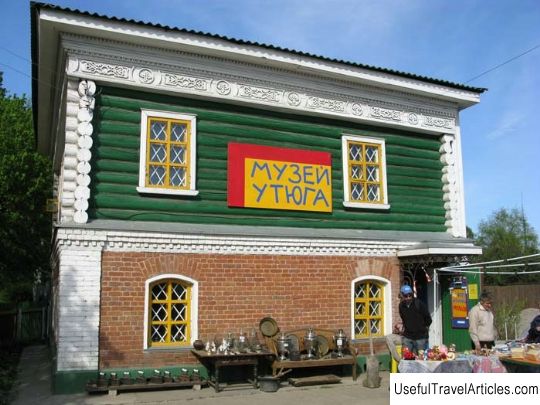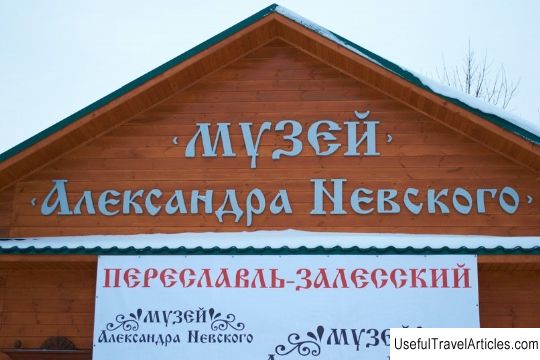Pereslavl Kremlin description and photo - Russia - Golden Ring: Pereslavl-Zalessky
Rating: 8,4/10 (451 votes) 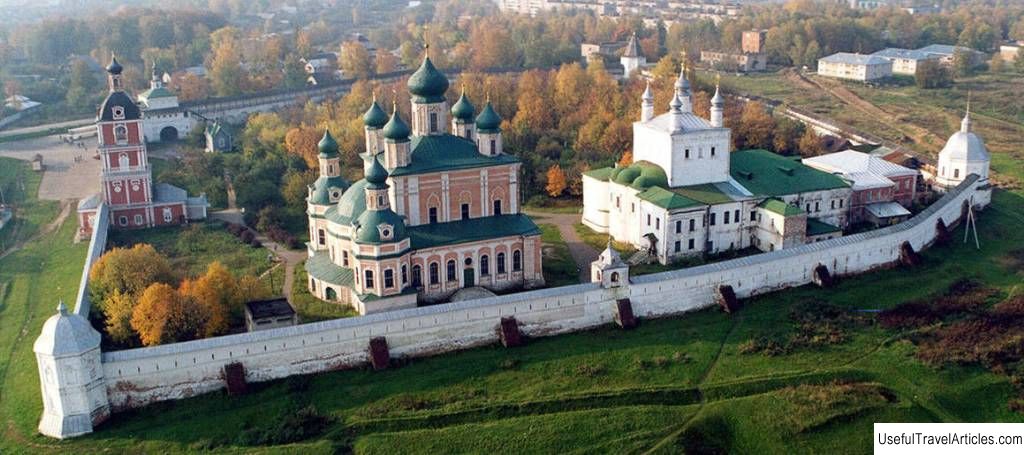
Pereslavl Kremlin description and photos - Russia - Golden Ring: Pereslavl-Zalessky. Detailed information about the attraction. Description, photos and a map showing the nearest significant objects. Photo and descriptionThe Pereslavl Kremlin is located in the center of Pereslavl-Zalessky. From the wooden fortress there are grandiose shafts, up to 12 meters high, and inside there is a cathedral complex of churches of the XII-XIX centuries, in the main of which there is now a museum exposition. Pereslavl FortressThe first settlement , which gave rise to Pereslavl, was located on the very shore of Lake Pleshcheyevo and was called Kleshchin or Kleshchino - either from the word "splash", that is, "splash", or from the abundance of bream found in the lake. There was a small town with a wooden fortress on the ramparts - a settlement and the remains of these ramparts have survived from it. But Prince Yuri Dolgoruky decided to build a new fortress here in another place, at the mouth of the river, and named it Pereyaslavl . Later the name began to be pronounced as Pereslavl. It was 1152. The fortress turned out to be standing on an island . On one side it was protected by a lake, on the other - by the Trubezh and Murmazh rivers, and on the fourth side a deep ditch was dug. The fortress was protected by huge ramparts . Wide wooden log cabins were placed, and already on top they were covered with earth. As a result, now the thickness of the shafts in the bases is about thirty meters, and the current height is up to twelve meters. The wooden walls were double. Inside was the wooden palace of the prince . By the end of the 12th century, one of the most powerful wooden ancient Russian fortresses was built here - and it has remained wooden throughout its history. Pereslavl was in the XII-XIII centuries. the third largest city and was second only to Kiev and Smolensk. The city was seized and burned several times . In 1238 it was ravaged by the troops of Khan Baty , who had previously plundered and burned Vladimir. At the end of the XIII century, the Horde troops will send here at the call of their own, Russians. The fact is that the children of Alexander Nevsky began to fight for power: the Prince of Pereslavl Dmitry Alexandrovich fought with his brother Andrei Alexandrovich . Both princes went to the Horde for labels to reign - and both received labels: in the Horde, too, by that time, feuds began and different khans supported different princes. As a result, in 1291 near Pereslavl there was a clash between the troops of the khan Mengu-Timur and Nogai . The walls of the Kremlin were significantly renewed and strengthened by Dmitry Donskoy . When the Lithuanians tried to seize the fortress in 1372, they could not do it, but they could in 1382 Tokhtamysh . In Time of Troubles at the beginning of the 17th century the city was burned by the Poles, and then it was recaptured by the voivode M. Skopin-Shuisky . The last wooden walls were rebuilt in 1666. But Pereslavl was no longer subjected to any attacks, and there was no longer a need for fortifications. In 1759 the dilapidated wooden Kremlin was dismantled - only the city ramparts remained. Transfiguration Cathedral In the center of the Kremlin there is stone Spaso-Preobrazhensky Cathedral . He appeared here in the year the city was founded - 1152 . This is one of the oldest surviving monuments of church architecture. It was built so that in the event of an attack it could serve as a refuge: the thickness of its walls is about a meter, and its small narrow windows look more like loopholes. It has a fairly simple decor and was built so solidly that it has hardly changed over time. If he had any outbuildings and galleries, they were wooden and no traces have survived from them. It served as the burial-vault of the Pereslavl princes. Once the cathedral was painted, but almost nothing has survived from the frescoes. The most ancient frescoes were knocked down during repairs at the end of the 19th century, only one fragment of them has survived - it is in the collections of the State Historical Museum. And the frescoes of the 19th century were not preserved already in Soviet times. The renovation in 1891-94 was carried out with the permission of the Archaeological Commission on the initiative of the local ktitor merchant PN Kozhevnikov . In addition to new frescoes, a new marble iconostasis has appeared here - it has survived to this day. The most important and sensational find in this cathedral is unique graffiti of the 12th century . New restoration technologies made it possible to discover them. Pereslavl believers drew crosses and other signs on the walls out of boredom, but most importantly, they found an inscription on the wall with a list of twenty names. This is a list of the murderers of Prince Andrei Bogolyubsky , some of the names of which are fully confirmed by the chronicle data. There are several more relics originating from this temple in different museums. For example, the Tretyakov Gallery holds the 15th century icon "Transfiguration", the Armory Chamber - the 12th century chalice, and the Manuscript Department of the Russian National Library - the facial Gospel. The temple ceased to function after the revolution, stood in desolation, and its decoration was destroyed. In the 1930s, excavations were carried out inside, it was slightly tidied up. After the war, a exposition dedicated to Alexander Nevsky was opened in it, and in 1958 a bust of this prince, a native of Pereslavl, was installed in front of the building. Now the temple is under the jurisdiction of Pereslavl-Zalessky Museum-Reserve . Sometimes, in agreement with the museum, church services are held there. Access is only available during the summer. Restoration work continues. Vladimirsky Cathedral and Alexander Nevsky Church The cathedral complex includes two more churches ... These are the remains of the Sretensky women's monastery , which appeared in the Kremlin at the beginning of the 18th century. The small monastery was at first made of wood, but in the middle of the 18th century, two events happened simultaneously: the monastery was abolished by Catherine II , who thus “optimized” the church economy, and at the expense of the Pereslavl merchant F. Ugryumov a new brick church was built, which was used as a summer parish. The Ugryumov merchants were a notable family in Pereslavl and kept a linen factory in the city. The wooden house that once belonged to them is located not far from the Kremlin and is part of the museum complex. At the same time, another church in the same Baroque style is being built - Alexander Nevsky Church . The complex also included a three-tiered bell tower and a stone fence, but they have not survived to our time, they were demolished in the 1930s. Both temples were richly decorated, but almost nothing of the decoration has survived to this day. St. Vladimir's Cathedral functioned until 1924. In 1925, both temples were robbed . The robbers carried out all the silver frames of the icons and precious utensils. After that, the cathedral was handed over to the city athletes, and the Alexander Nevsky church was turned into a library. Then both churches were once again redone: bread was baked in the Vladimir Cathedral, and a store was set up in the Alexander Nevsky Church. Since 1998, the temples have been transferred to the church and are active. To the church of St. Alexander Nevsky received a particle of his relics - it is considered the main temple shrine Church of Peter Metropolitan and Sergius of Radonezh On the territory of the Kremlin there is another church - Peter the Metropolitan . The wooden church has been here since the 15th century, and the current brick one was built in 1585 . In the lists, the building is listed as “a church in the sovereign's courtyard,” so at first, most likely, it was the home church of the Pereslavl princes and was part of an unpreserved complex of palace buildings. This is one of the rare examples of hipped roof churches - these were built in a very narrow period of time. It is small, but surprisingly proportionate and harmonious. In the 1880s it was renewed, and its original painting did not reach us. During the 60-70s. XX century the church was restored - it was returned to its original 15th century appearance, but it remained abandoned. Since 1991, it was officially transferred to the Church, now it is in the process of a slow restoration and is open only during rare services. The Church of St. Sergius of Radonezh is a former prison church , it was built at the very beginning XX century at the expense of the Pereslavl manufacturer, honorary citizen of the city, S. Pavlov. Not far from the Kremlin, there is a beautiful wooden mansion that belonged to this family. In Soviet times, the domes of the church were dismantled. Now the building is again transferred to the church and is slowly restored. Interesting facts
Notes
     We also recommend reading Towers of Bologna (Le due torri) description and photos - Italy: Bologna Topic: Pereslavl Kremlin description and photo - Russia - Golden Ring: Pereslavl-Zalessky. |

